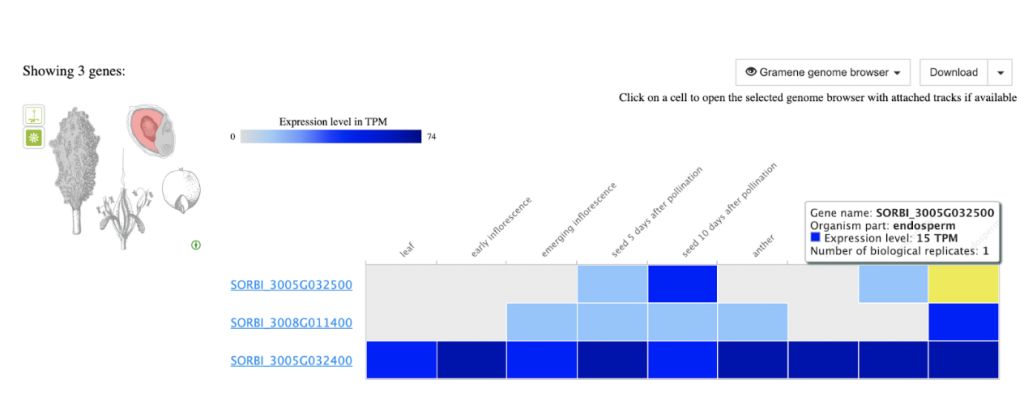Distinct Regulatory Mechanisms and Novel Transcriptional Activities of the COMPASS-like Complex in Sorghum
The study investigates the COMPASS-like complex, responsible for depositing H3K4 methylation, crucial for gene regulation, plant development, and stress response. Through homologous search, nine genes encoding four subunits of the COMPASS-like complex were identified in sorghum. Phylogenetic analysis highlighted the unique presence of two additional ASH2 genes in the sorghum genome, specifically expressed in endosperms. This suggests a distinct COMPASS-like complex in sorghum endosperms. Protein-protein interaction tests (Y2H and BiFC) showed significant interactions between SbRbBP5 (SORBI_3001G462600) and SbASH2A/B/C (SORBI_3005G032400/SORBI_3005G032500/SORBI_3008G011400), whereas interactions involving other subunits were weak, possibly due to sequence variations in SbWDR5A/B (SORBI_3001G107300/SORBI_3002G347000). Unlike Arabidopsis, where ATX1 interacts with the C-Terminal Domain (CTD) of Pol II, this interaction was not observed in sorghum SbATX1/2/3 (SORBI_3002G148400/SORBI_3003G016500/SORBI_3003G241700). However, a novel transcriptional activation activity in RbBP5 was discovered, conserved across sorghum, rice, and Arabidopsis, offering insights into the COMPASS-like complex’s regulatory mechanisms in plants.
The evolutionary analysis indicated that WDR5 and RbBP5 exhibit relatively consistent evolution across species, while ASH2 shows significant divergence. Sorghum’s three ASH2 proteins, resulting from gene duplication, suggest a more complex regulatory role in endosperm-specific COMPASS-like complexes. The expression patterns of these genes were analogous to those in maize, with SbASH2B/C specifically expressed in endosperms. Notably, strong interactions were confirmed between SbRbBP5 and SbASH2A/B/C, highlighting the conservation of the RbBP5-ASH2 heterodimer formation across species. Weak interactions involving SbWDR5 suggest potential sequence variations affecting its interaction capabilities. This study underscores the necessity for further research, including immunoprecipitation coupled with mass spectrometry, to validate the presence and function of the COMPASS-like complex in sorghum. The discovery of RbBP5’s transcriptional activation activity provides a new perspective on how the COMPASS-like complex regulates gene expression, emphasizing the complex’s potential recruitment mechanisms and functional diversity in plants.
SorghumBase example:

Reference:
Xu H, Chen X, Zeng G, Qin X, Deng Z, Cheng W, Shen X, Hu Y. Unveiling common and specific features of the COMPASS-like complex in sorghum. Plant Physiol Biochem. 2024 Jun;211:108709. PMID: 38744082. doi: 10.1016/j.plaphy.2024.108709. Read more

